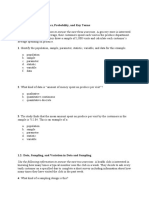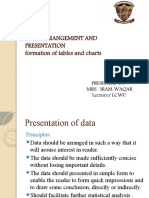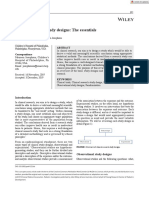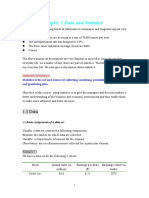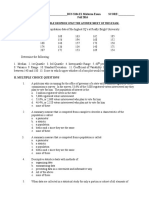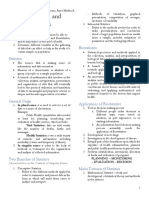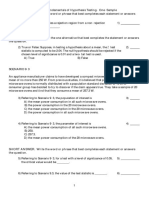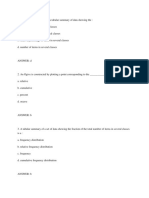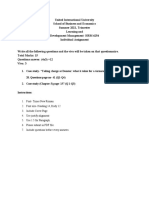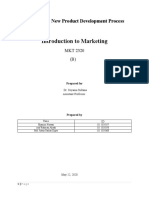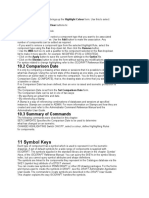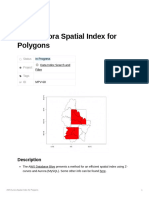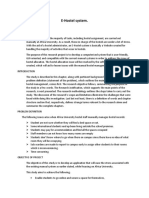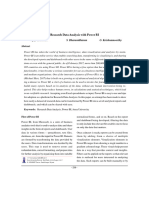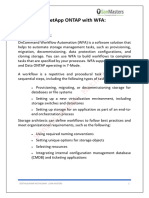CHAPTER 2 ASSIGNMENT
DESCRIBING DATA: FREQUENCY DISTRIBUTIONS AND GRAPHIC
PRESENTATION
Part I Select the correct answer and write the appropriate letter in the space provided
_____ 1. A grouping of data into classes giving the number of observations in each class is called a(an)
a bar chart.
b. frequency distribution.
c. pie chart.
d. cumulative frequency distribution.
______ 2. The distance between consecutive lower class limits is called the
a. class interval.
b. frequency distribution.
c. class midpoint.
d. class frequency.
______ 3. The class midpoint is
a. equal to the number of observations.
b. found by adding the upper and lower class limit and dividing by 2.
c. equal to the class interval.
d. all of the above.
______ 4. The number of observations in a particular class is called the
a. class interval.
b. class frequency.
c. frequency distribution.
d. none of the above.
______ 5. A bar chart is used most often when
a. you want to show frequencies as compared to total observations.
b. you want to show frequencies by class intervals.
c. you want to display frequencies by category.
d. you want to organize data along certain time interval.
______ 6. In a relative frequency distribution
a. the class frequencies are divided by 100.
b. the data are related to each other rather than mutually exclusive.
c. the class frequency is divided by the total number of observations.
d. the frequencies are added together to give a relative set of numbers.
______ 7. The suggested interval size of the class intervals for a histogram can be estimated by:
a. consecutive lower class limits divided by 2.
b. consecutive lower class limits divided by the total number of observations.
H L
i
c. using the formulas: k
d. consecutive lower class limits divided by the number of frequencies in each class
�______ 8. A pie chart requires at least what level of data?
a. nominal
b. ordinal
c. interval
d. ratio
______ 9. A graphic representation of a frequency distribution constructed by connecting the class
midpoints with lines is called a
a. histogram.
b. line chart.
c. pie chart.
d. frequency polygon.
10. Refer to the following information on the number of units assembled per shift at Acme
Assembly, Inc.
Units assembled Shifts
20 up to 30 16
30 up to 40 25
40 up to 50 51
50 up to 60 80
60 up to 70 20
70 up to 80 8
Total 200
11 4
i) The class interval is: (Refer to: 10)
A) 10
B) 25
C) 9
12 4
D) None of the above.
ii) The frequency for the third class is (Refer to: 10)
A) 200
B) 51
C) 10
D) None of the above.
�11. The following is a breakdown of the expenditures of the Amount
Ohio Division of Wildlife for 2002. Construct a pie chart. Category (millions)
Administration 2.0
Education 4.7
Law enforcement 3.6
Wildlife officers 7.1
Fish management 7.6
Wildlife management 10.5
Operations 7.6
Capital improvements 2.0
12. Listed are the weights of the 2003 Super Bowl Champion
Tampa Bay Buccaneers starting lineup, including the place kicker and the punter.
Organize the data into
a. a frequency distribution (use a class interval of 30, with 180 as the lower limit of the first class)
b. a relative frequency distribution
c. a cumulative frequency distribution
228 209 195 305 324 215
241 291 181 242 234 320
190 210 230 263 194 205
326 333 186 225 279 255
d. Draw a histogram for the data.
e. Develop a frequency polygon.
f. Draw a cumulative frequency polygon.
